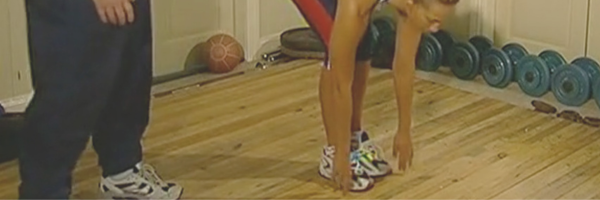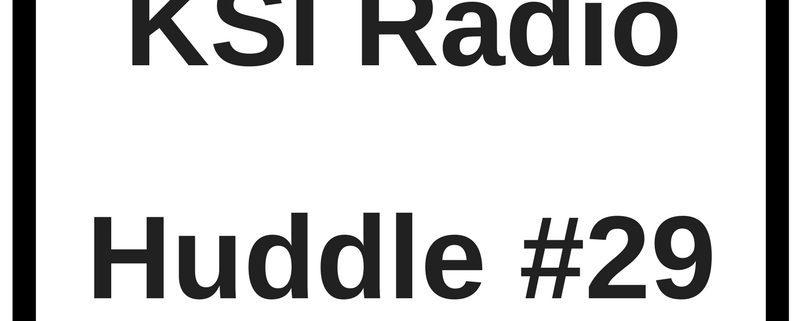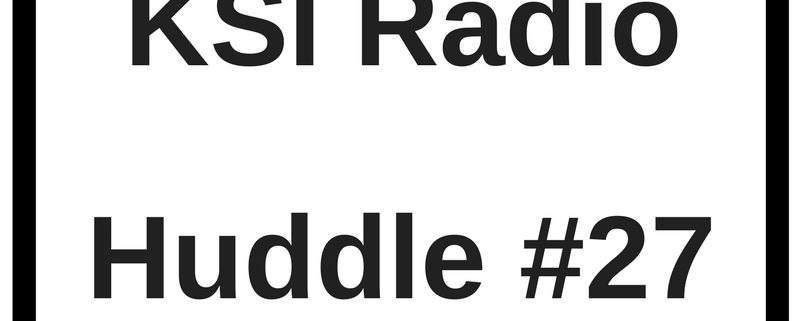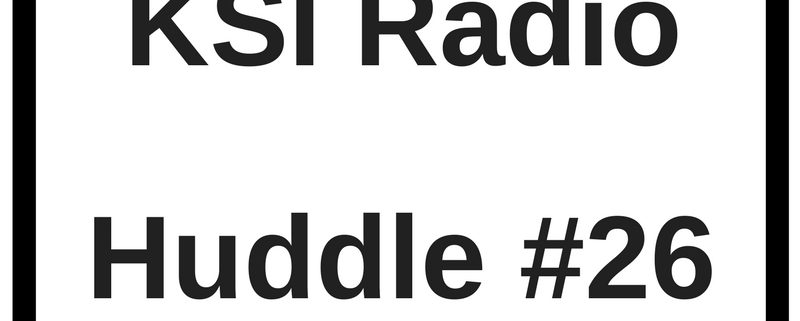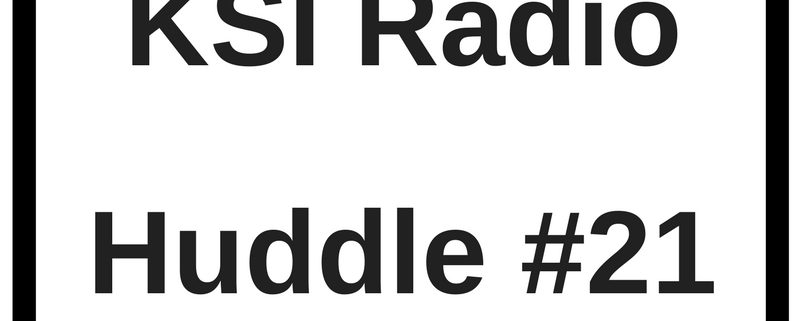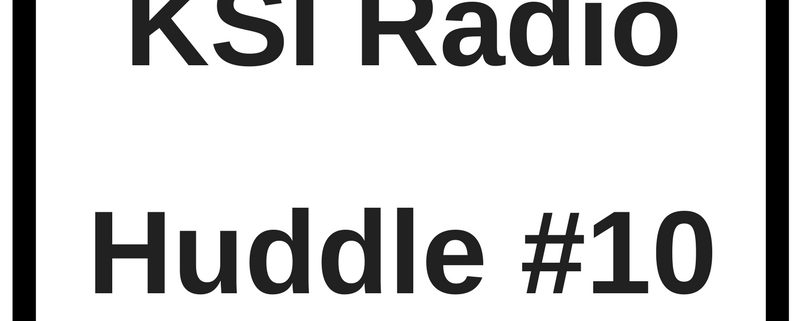Does exercise accuracy matter?
Introduction
When speaking to physical trainers, therapists and other aligned professionals as I travel on the quest to answer the question ‘What is the best way to train?’, I appreciate learning from them. What they think, what they say, and what they do with athletes and clients.
This journey has involved the privilege of travelling the world for many decades seeing these training trends firsthand. When asked what the most common exercise I see being done from my innovation, it is, without question, the single-leg stiff-legged deadlift. The only problem is that I almost never see it being done in the way I intended. It would be difficult to walk into any gym in the world now and not see someone performing an imitation of a small oil rig.
Over time I also hear the words used to describe the exercise and the interpretation of when and how to use it varies more and more.
For example, I was recently in a seminar when one of the participants – a highly qualified and experienced practitioner, albeit a post-2000 entrant to their profession – repetitively referred to my exercise innovation of some forty years ago as a ‘single leg RDL’. And spoke about their application of it to rehab a client’s chronic hamstring injury. With limited success.
It may have been that little bit of German heritage in myself, but my excellence-at-risk meter tends to rise towards the red line when I see and hear these things that for me are the opposite of exercise accuracy. But perhaps that is my problem. Perhaps exercise accuracy doesn’t matter?
When I speak about exercise accuracy, I refer to the origin, name, execution, the application. I will continue on with the theme of the exercise I called the single leg stiff leg deadlift.
The origin
In this section, I share my observations of the evolution of the stiff-legged deadlift.
The stiff-legged deadlift
First, there was the stiff-legged deadlift. It was an exercise done for the most part by competitive lifter – Olympic and power – as a supplementary exercise to pulls and deadlifts.
I described this exercise many years ago in the following way:
MG Stiff Legged Deadlift: Take a medium grip (about shoulder width) and commence in a standing position. Lower the bar down by bending at the hips, not at the knees. In the start, the knees should be slightly bent and remain exactly at joint angle during the lift. [1]
It was a two-legged (bi-lateral) loaded exercise using the barbell.
You will find this exercise championed in books that shaped training through the lat half a century including but not limited to:
The single-leg stiff-leg deadlift
During the early 1980s, I concluded that the dominant approach to strength training was creating muscle imbalances because of the bias in programs towards exercises such as the bench press and the squat. I didn’t want that collateral damage for the athletes I trained, and I set about developing a categorization of exercises to avoid such imbalance in program design. This led to the concept of ‘Lines of Movement’, where I introduced terms and definitions to place every strength exercise into an exercise category.
The following shows a breakdown of the body into major muscle groups/lines of movement, and then into examples of exercises. It is what I call ‘the family trees of exercise’. Use this to assess balance in your exercise selection.
To help you understand how to divide and balance out your training, Ian came up with a list of major muscle groups that reflects their function:[3]
Horizontal pulling (row)
Horizontal pushing (bench press)
Vertical pulling (chin-up)
Vertical pushing (shoulder press)
Hip dominant (deadlifts)
Quad dominant (squats)
So, when I was writing a program, I increased the balance of the program by ensuring balance in the Lines of Movement.
When developing the term ‘hip dominance’ and defining what constitutes a hip dominant exercise, I realized that there were too few exercises in this category and that I needed to match the number, joint involvement and loading potential of exercises in the ‘Quad Dominant’ category.
I leaned on the traditional double leg barbell stiff-legged deadlift to create a single-leg, nil, or low-loaded variation option.
During the 1980s I refined the movement however, as with all my innovations, I trialled and tested it for a decade before extensively publishing it commencing from the late 1990s.
You can see the original exercise in the image below, taken from the How to Teach Strength Training Exercies Video Series (2000).

The ‘Romanian Deadlift’ (RDL)
The “Romanian Deadlift’ appeared in the US in the early 1990s. Initially, this exercise had no known name, or at least not one that the person I learnt it from gave it. Dragomir Cioroslan, (a former Romanian national weightlifting coach who went on to work with the US Weightlifting team) and his protegee’s were doing a series of demonstrations and seminars during the early 1990s when many, including myself, were intrigued by a unique exercise that they were using as a supplementary exercise – somewhat of a cross between a deadlift and a stiff-legged deadlift.
I had been analyzing the physiques of Dragomir’s athletes for a few days before I got to see them train, and I was puzzled by their hamstring development. There were other shape differences between the and other weightlifters of that era, but that was the one that I linked to this exercise. So, before I got to see them lift, they had my attention.
I began integrating the ‘Romanian Deadlift’ into my training programs and in the absence of a name I called it the Romanian Deadlift, in respect of the origin. I have since noted others came to this same name conclusion. In all publications since that time, I have continued to use that name for this exercise.
The name
By the time I learnt of the loaded bilateral single-joint exercise we called the Romanian Deadlift, I was already well advanced in using the exercise variation I had developed and named the single-leg stiff-legged deadlift.
I began integrating the ‘Romanian Deadlift’ into my training straight away, however, it was not as a substitute or synonym for what I had developed but rather as an additional tool in the toolbox. In my mind they were two different exercises.
Not only was one unilateral and the other bilateral, but also because they were conducted with strikingly different techniques and loading potential.
When I see or hear the term ‘RDL’ to refer to the single-legged deadlift as I had innovated, I question their understanding of that person as to the execution and intent of each exercise.
For me, the only thing they have in common is that they are both relatively isolated posterior chain exercises i.e., they only involve the hip, rather than the knee and the hip.
The execution
To commence the discussion of the difference in execution between the single leg stiff legged deadlift and the Romanian Deadlift, I share the descriptions of each I provided in the late 1990s.
Romanian Deadlift
In plainer terms this is a flat back version of the stiff-legged deadlift. With the bar on your back, take a shoulder-width stance and slightly bend the knees. The knee angle is now not to change during the lift. Flex or lower forward from the waist, keeping your chest up and hip/spine flat i.e. aligned. Only flex forward as far as you can PRIOR to any rounding of the spine or posterior rotation of the hip. For most, this will not be very far!
You can also accentuate the hamstring involvement by pushing the bum back and allowing your weight to drift to your heels during the lowering. During the lift, squeeze the gluts. This increases the hamstring involvement, which is the aim.[4]
Single Leg standing Stiff Legged Deadlift
Let the fun begin! Stand on one leg – have the other foot off the ground, but kept roughly parallel with the leg doing the supporting. Bend the knee slightly, but that knee angle should not change during the exercise (get a partner to watch for this, as it will be tempting to do so!). Now bend at the waist, allowing the back to round and reach slowly towards the floor. If your range allows, touch the floor with the fingertips and return to the starting position. Use a speed of 3 seconds down, 1 sec pause at the ends, and 3 seconds up.
You may struggle with balance, but persist – you will be developing the muscles in the sole of the foot! The first time you do this you may find you are touching down with the non-supporting foot regularly to avoid falling over. This is ok, but in later workouts, try to minimize this. When you have mastered this exercise, and touching of the ground by the non-supporting leg means terminate the set – this is your challenge.
Don’t be surprised if you can only do 5 reps on day 1! Look to increase the reps from workout to workout. Hold light DB’s in your hand ONLY when you get to 10 reps at the speed indicated. No warmup set necessary. Remember the weak side rule. [5]
Unfortunately for the world’s interpretation of how to execute the single leg stiff legged deadlift, only a few years after I began more openly sharing the exercise in publications, it appeared unreferenced in a prominent magazine, performed in a way that reflected the ‘author’s’ lack of understanding (and perhaps also the male models lack of flexibility, balance and single leg strength – to be able to do the exercise!). Learn more about that here.
To be clear, consider the following comparison:
| Variables | SL Stiff Legged DL | Romanian Deadlift | Similar | Different |
| Hip dominant exercise |
* |
|||
| Isolated hamstring | Less so | More so (1) |
* |
|
| Number of limbs | One (unilateral) | Two (bilateral) |
* |
|
| Loading on feet | Central | Rear |
* |
|
| Spine shape | Rounded | Flat |
* |
|
| Chest shape | Collapsed | Up |
* |
|
| Loading potential | Lower | Higher |
* |
- When done correctly as per the manner originally intended.
Between the descriptions provided and the table above, it may be clearer why I do not see the words ‘RDL’ relevant to the single-leg stiff-legged deadlift. There are far more differences than similarities.
The application
The original rounded-back stiff-legged barbell deadlift is an excellent exercise for strengthening spinal segment strength in addition to hamstrings. However, the political correctness trend in exercise has veered away from exercises and variations that include a rounded spine. That’s unfortunate for athletes who experience loading and/or impact in a less-than-neutral spine shape.
The application of the exercise I innovated, the single-leg stiff-legged deadlift, is not as clear-cut as many assume. In theory, being a unilateral, single-joint exercise, it would have a broad application earlier in the training career, year and return from injury/surgery.
However due to the range involved, the increased loading on the hamstring due to the more bloated nature of the exercise, the increased demand on balance, and the fixed load of the body, this exercise needs to be reviewed and reflected on prior to being included in a training program.
Additional points to consider include:
- When conducted in an optimal manner (as per it was developed) – with the non-working leg remaining still and parallel to the working leg – the range may be limited by the hamstring flexibility (this was not a problem for me during the developmental decade, because of the premium I placed on flexibility training).
- If the athlete/client lacks the balance and or range to execute the movement tin the intended manner, you can choose between developing these qualities or default to the influence of allowing the back leg to raise.
- If you go with the softer option, you are reducing the work (including balance) in general due to counterbalancing of the back leg, and reducing the workload and isolation on the hamstring by allowing the pelvis hemispheres to diverge.
- Therefore, a decision needs to be made regarding progression – to work on improving range, repetitions, and or load. Generally speaking, I recommend working from the former to the latter.
The Romanian Deadlift (RDL) provides greater loading potential than the single leg stiff legged deadlift version, however, the following are important points:
- The RDL should not be considered as an equal and opposite of a squat, as the relative loading potential of this exercise compared to the squat is less.
- The RDL as a rounded back exercise should not negate the inclusion of a rounded back variation in athletes who may be exposed to loads in their sport where the spine is less than in neutral (rounded).
- If the pivot at the hip joint is not maintained as the exclusive pivot point, the relative load/work/isolation on the hamstrings is reduced.
- Therefore, considering the progressively reducing nature of athlete flexibility, you may not be working through the range you initially expected or anticipated.
Now to touch briefly on a key point in the application. There has been a long-retained belief, at first in the physical therapy disciplines and now also in the physical training disciplines, that isolated hamstring strength training is the key to rehabilitating or preventing hamstring strains.
Many decades ago, I reached an alternative conclusion. It’s not the aim of this article to go deep on this subject, however, I feel it may be remiss of me to not touch upon it.
Keep in mind my suggestion that if you fail to identify the cause of the injury (and I suggest weak hamstrings are not the cause in the overwhelming majority of cases), then your ‘solution’ may contribute to the problem.
Learning that the single leg stiff legged deadlift – an exercise near and dear to my heart because it is essentially one of my ‘babies’ – is being used in a ‘hamstring strengthening program’ to rehabilitate athletes with hamstring strains, or prevent hamstring strains, is difficult to hear. I do not believe the goal will be achieved, and the athlete does not deserve to be a guinea pig for this misguided paradigm.
Conclusion
For almost twenty years now I’ve watched the single-leg stiff-legged deadlift gain global acceptance – in and out of the gym. The only problem was that it was not being done in the intended manner. More recently I have seen this popularity expand into rehabilitation, and this becomes even more concerning. And to hear the confusion around the name, such as the use of the term ‘RDL’ in the same exercise name, is a reflection of a lack of understanding o the nuance of the RDL to achieve the hamstring isolation.
Maybe that’s just me being too German-like, seeking precision and excellence in the process.
Maybe exercise accuracy doesn’t matter?
References
[1] King, I., 1999, Get Buffed! 1 (book), p. 244
[2] King, I., 1998, How to Write Strength Training Programs, P. 32
[3] Shugart, Chris, 2001, The Ian King Cheat Sheets, Part 1 – A quick and dirty look at all the cool stuff Ian King has taught us so far, Fri, Aug 24, 2001, T-mag.com
[4] King, I., 1999, Get Buffed! I, p. 230-231.
[5] King, I., 1999, Get Buffed! I, p. 210-211.

